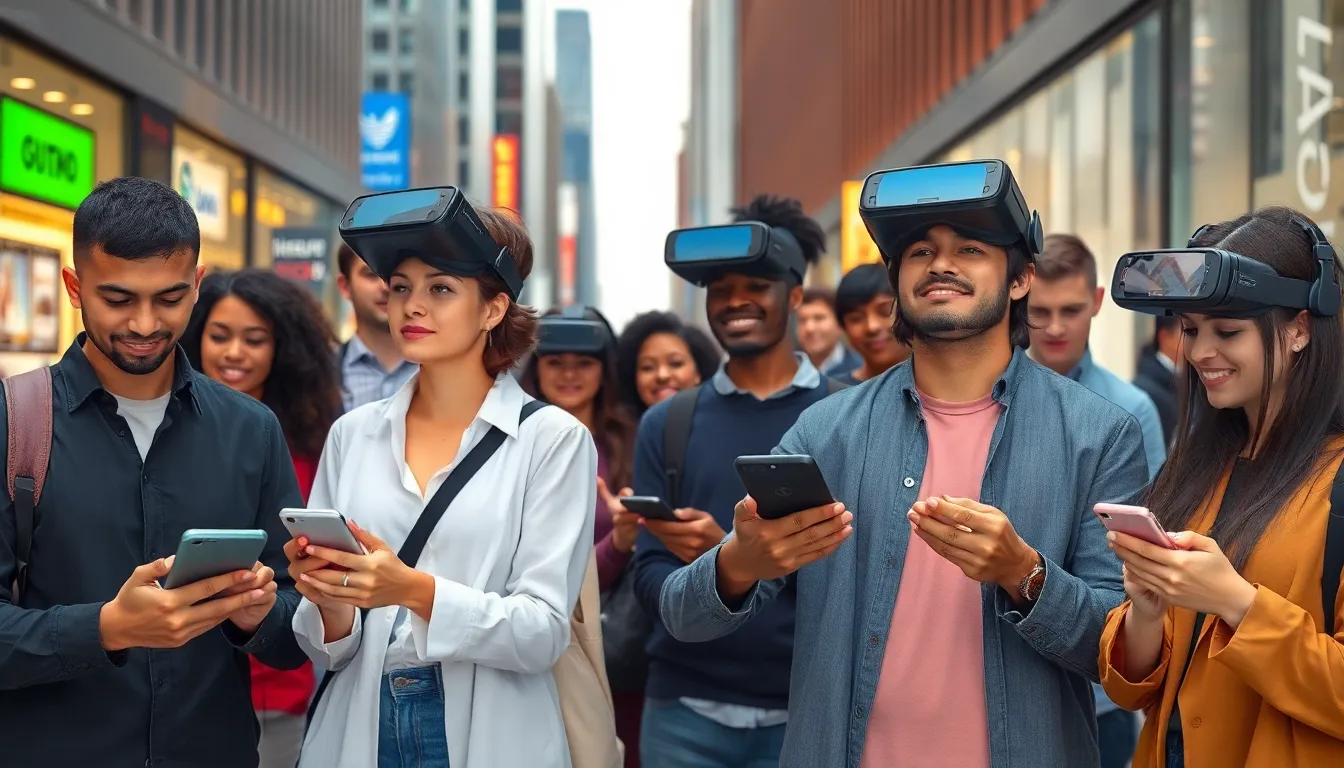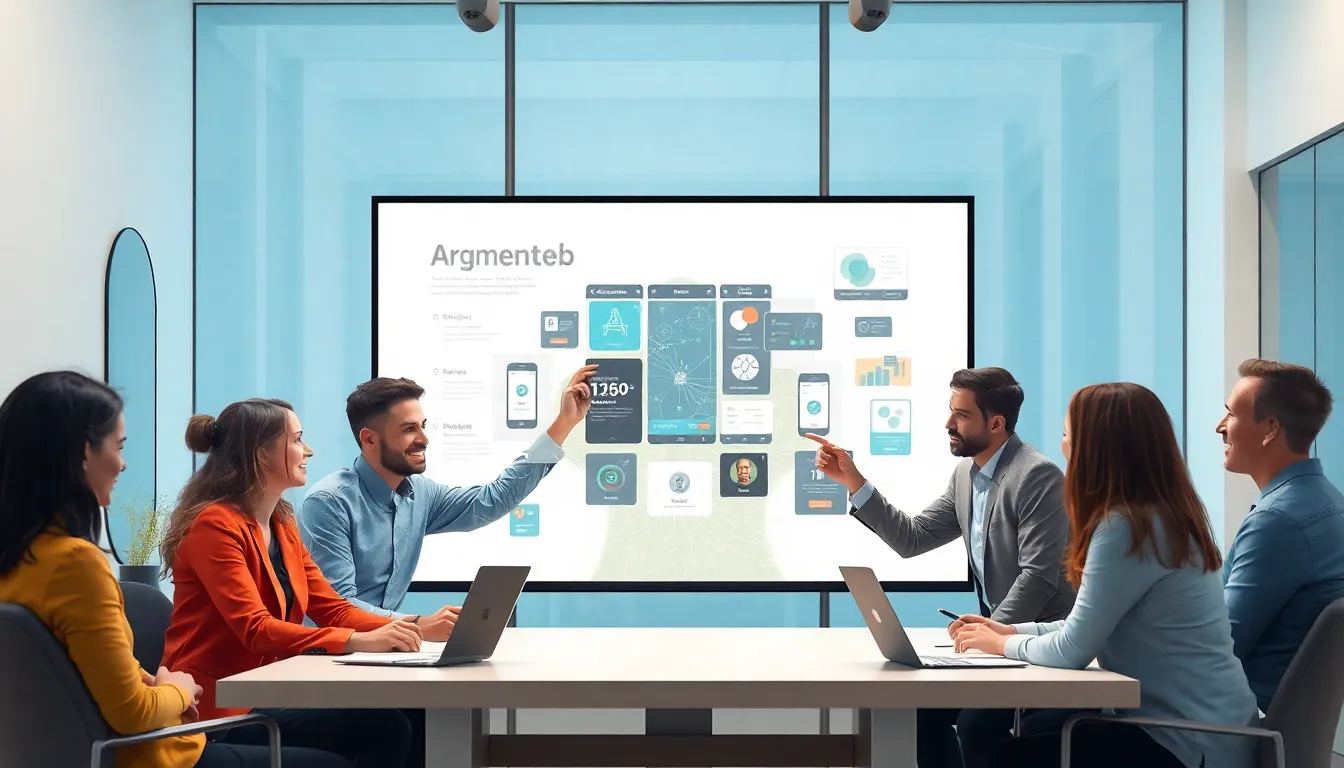In a world where smartphones have become our trusty sidekicks, app technological advances are the magic wand that keeps them relevant. From ordering pizza with a swipe to tracking fitness goals like a personal trainer in your pocket, apps have transformed daily life into a seamless experience. But wait, there’s more! These innovations are not just about convenience; they’re also about turning mundane tasks into delightful adventures.
Imagine an app that can predict your mood based on your favorite cat memes or one that helps you find the nearest coffee shop before you even realize you need caffeine. As developers push the boundaries of what’s possible, the future of apps promises to be as exciting as a rollercoaster ride—minus the long lines and screaming children. Buckle up as we dive into the latest breakthroughs that are shaping the app landscape and redefining how users interact with technology.
Overview of App Technological Advances
Recent advancements in app technology significantly enhance user experience and functionality. Artificial intelligence (AI) integration allows apps to learn from user behavior, providing personalized recommendations. Smart features, such as natural language processing, enable seamless communication between users and apps.
Enhanced performance through cloud computing gives users access to powerful resources without requiring high device specifications. Improved security measures protect personal data from unauthorized access, earning user trust and confidence. These features decrease app loading times and improve overall reliability.
Virtual and augmented reality experiences push the boundaries of traditional app usage. Gaming, education, and retail sectors leverage these technologies to create immersive environments. Companies utilizing augmented reality promote customer engagement by enabling virtual try-ons of products.
Integration of Internet of Things (IoT) within applications fosters connectivity among smart devices. This connectivity facilitates smart home management, wellness monitoring, and automated daily routines, enriching user lifestyles. Developers prioritize cross-platform compatibility, ensuring a consistent experience across various devices.
Data analytics provides insights into user behavior and preferences, allowing for targeted marketing strategies and continual improvement of app performance. Remote collaboration tools enhance communication among teams, fostering productivity in modern work environments. Rich media support encourages unique content creation within social media applications.
Robust app ecosystems thrive amidst rapid development, enabling users to explore diverse functionalities. Continuous updates ensure applications stay relevant and adaptable to emerging trends. As technological advancements evolve, the future promises even more innovative applications that integrate seamlessly into daily life.
Key Innovations in App Development


Technological advancements in app development continue to reshape user interaction and functionality. Among these innovations, artificial intelligence and machine learning play a crucial role.
Artificial Intelligence and Machine Learning
AI and machine learning empower apps to provide personalized experiences. These technologies analyze user behavior to deliver tailored recommendations in areas like shopping and entertainment. Voice assistants enhance usability, allowing communication through natural language. Apps continually learn from interactions, improving accuracy over time. Companies benefit from data-informed decisions leading to efficient app updates and feature enhancements. Users enjoy a smooth experience thanks to intelligent algorithms that adapt to preferences and habits.
Augmented Reality and Virtual Reality
Augmented reality and virtual reality reshape traditional app usage, particularly in sectors like gaming, education, and retail. These technologies enable immersive experiences, captivating users in ways that engage their senses. In retail, virtual try-ons allow customers to visualize products without visiting physical stores. Educational apps use AR for interactive learning, improving knowledge retention through hands-on engagement. Gaming experiences integrate VR for an interactive gaming environment, enhancing user enjoyment. Continued advancements in AR and VR promise even more innovative applications across various industries.
User Experience Enhancements
Recent technological advances in apps focus on improving user experience through various innovations. Enhancements in design and functionality create engaging and efficient interactions.
Improved User Interfaces
Modern apps feature refined user interfaces that simplify navigation. Intuitive layouts allow users to find what they need quickly. Consistency across platforms ensures a seamless experience, whether on smartphones or tablets. Visual elements, such as icons and animations, enhance interaction and keep users engaged. Accessibility options cater to diverse user needs, making apps usable for everyone. Developers frequently conduct usability testing to gather feedback and make ongoing adjustments, optimizing the user experience further.
Personalization Features
Personalization transforms how users interact with apps. Machine learning algorithms analyze user data to provide tailored recommendations, ensuring content relevance. Customized notifications engage users by highlighting updates based on preferences and behavior. Personalized settings let users modify their interface to suit individual tastes. Additionally, location-based services enhance personalization by offering relevant options nearby. Developers prioritize these features to foster deeper connections between users and apps, leading to higher satisfaction and retention rates.
Security and Privacy Improvements
Recent advancements in security measures enhance the protection of user data and build trust. Users prioritize their privacy, and these innovations address that need effectively.
End-to-End Encryption
End-to-end encryption shields communication between users from unauthorized access. This technology encrypts data on the sender’s device, maintaining security until it arrives at the recipient’s device. Apps utilizing this method, such as messaging platforms, ensure that only intended recipients can access the information. Data breaches remain a significant concern, making this form of encryption vital for safeguarding sensitive conversations. Users can exchange information with confidence, knowing that potential interceptors cannot access their messages.
Biometric Authentication
Biometric authentication adds another layer of security by utilizing unique physical characteristics. Fingerprints and facial recognition technologies streamline the login process while enhancing security. Users easily unlock their devices and access applications through their biometric traits, eliminating the need for passwords. This method reduces the likelihood of unauthorized access, as personal biometric identifiers are difficult to replicate. As more apps adopt this feature, users enjoy higher security without sacrificing convenience. Enhanced privacy protection fosters a trustworthy environment for users when interacting with applications.
Future Trends in App Technology
Significant advancements in app technology signal transformative changes ahead. These trends indicate a growing focus on enhanced connectivity and smart device integration.
The Rise of 5G Connectivity
5G technology revolutionizes mobile application performance. It enhances speeds, delivering higher bandwidth and more reliable connections. Users benefit from seamless streaming and quicker response times, particularly in gaming and video conferencing apps. The ability to connect multiple devices simultaneously improves overall user experience. With 5G, developers can create richer, more interactive applications that require real-time data processing. Applications that leverage 5G capabilities, such as augmented reality experiences, become more viable, opening new possibilities for engagement. Enhanced connectivity through 5G also fosters innovation, enabling the development of applications that utilize vast data sets and AI-driven insights.
Integration of Internet of Things (IoT)
IoT integration enhances the functionality and convenience of applications. Smart devices communicate easily, allowing users to manage home settings, monitor health metrics, and streamline daily tasks through app interfaces. Applications that connect with smart appliances create user-friendly experiences, simplifying complex interactions. Developers are increasingly focusing on compatibility, ensuring applications work across diverse platforms. Integration fosters automation, allowing users to set routines triggered by specific conditions, such as temperature changes or time of day. Data collected from IoT devices provides valuable insights, driving further personalization of app functionality. Overall, the expansion of IoT integration enriches user experiences, promoting a connected lifestyle.





